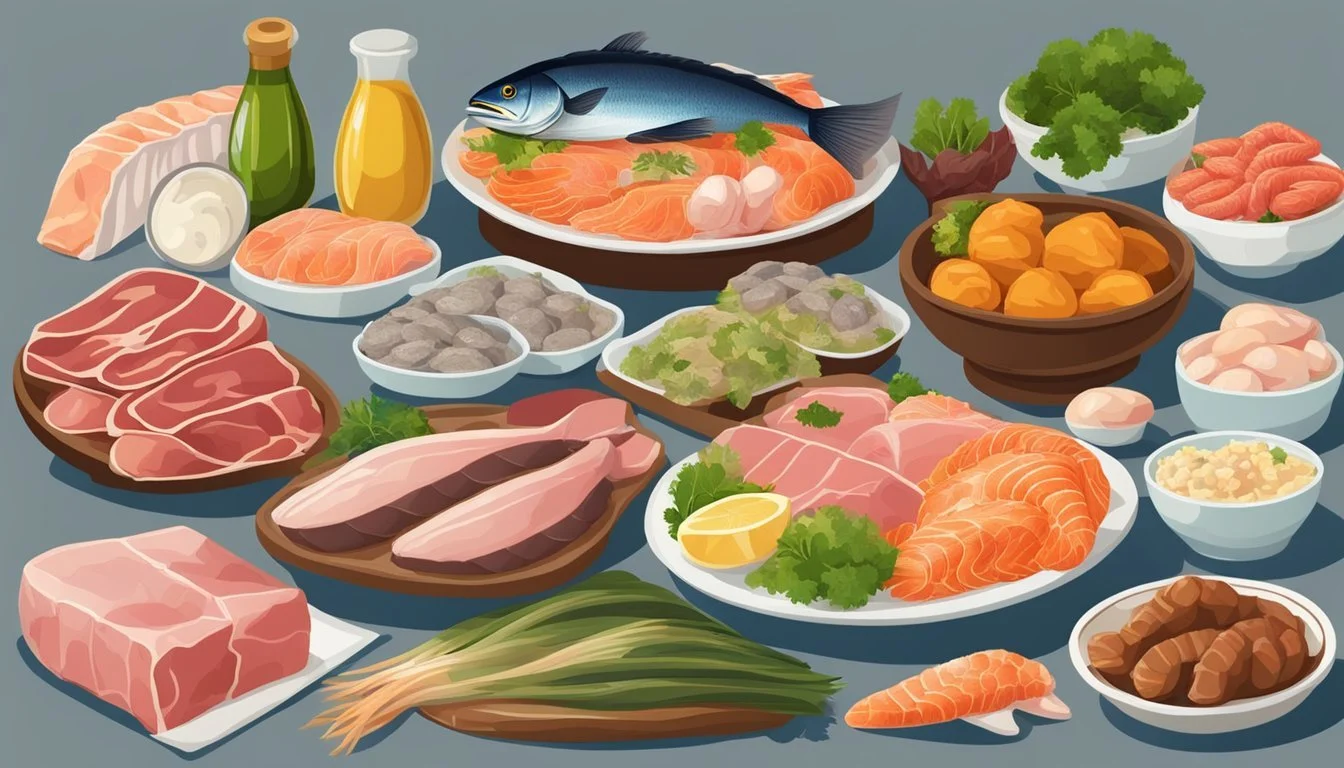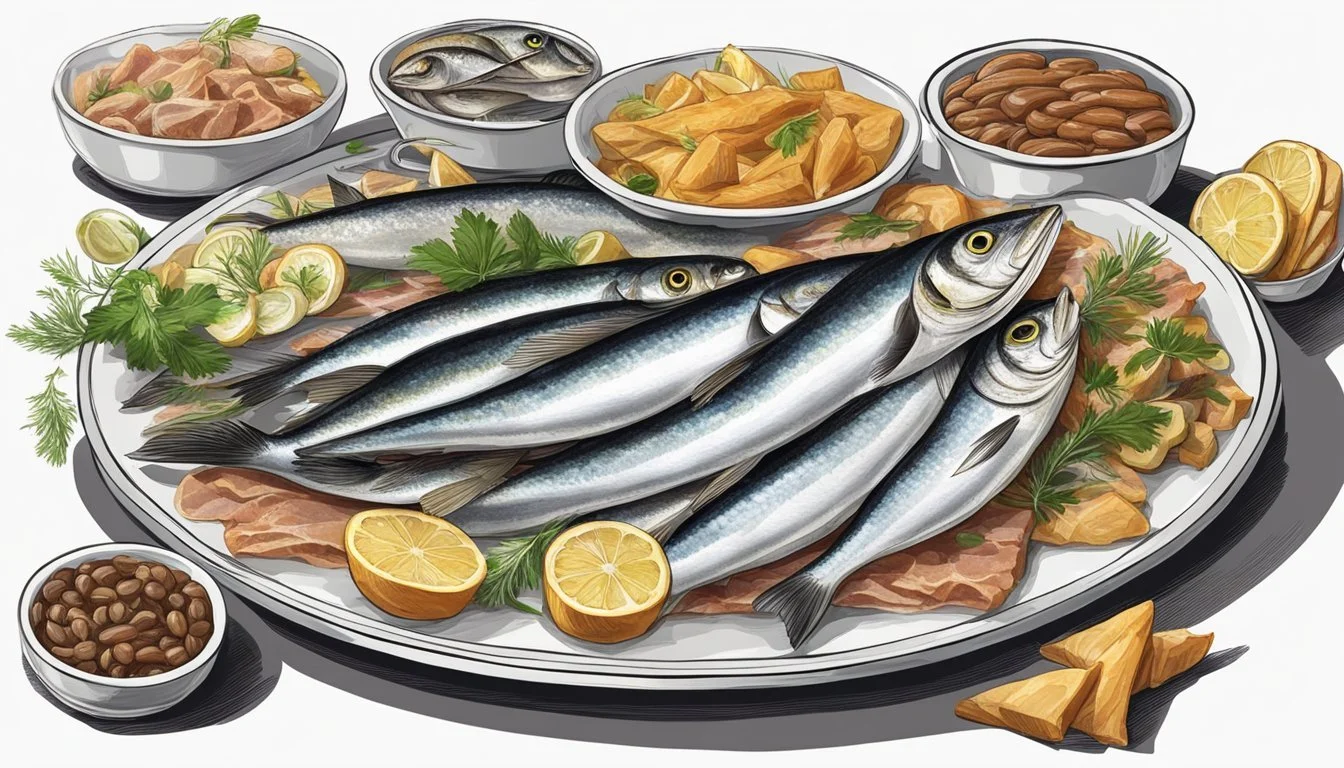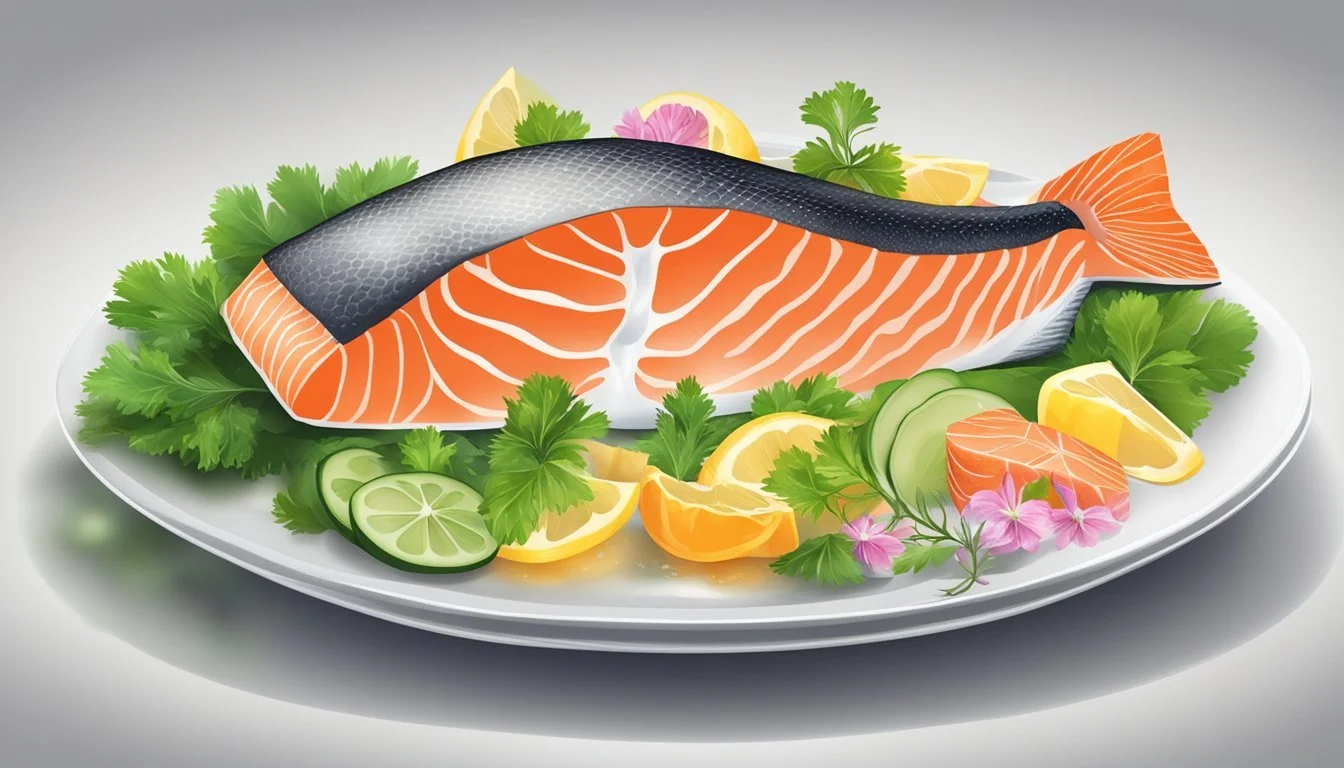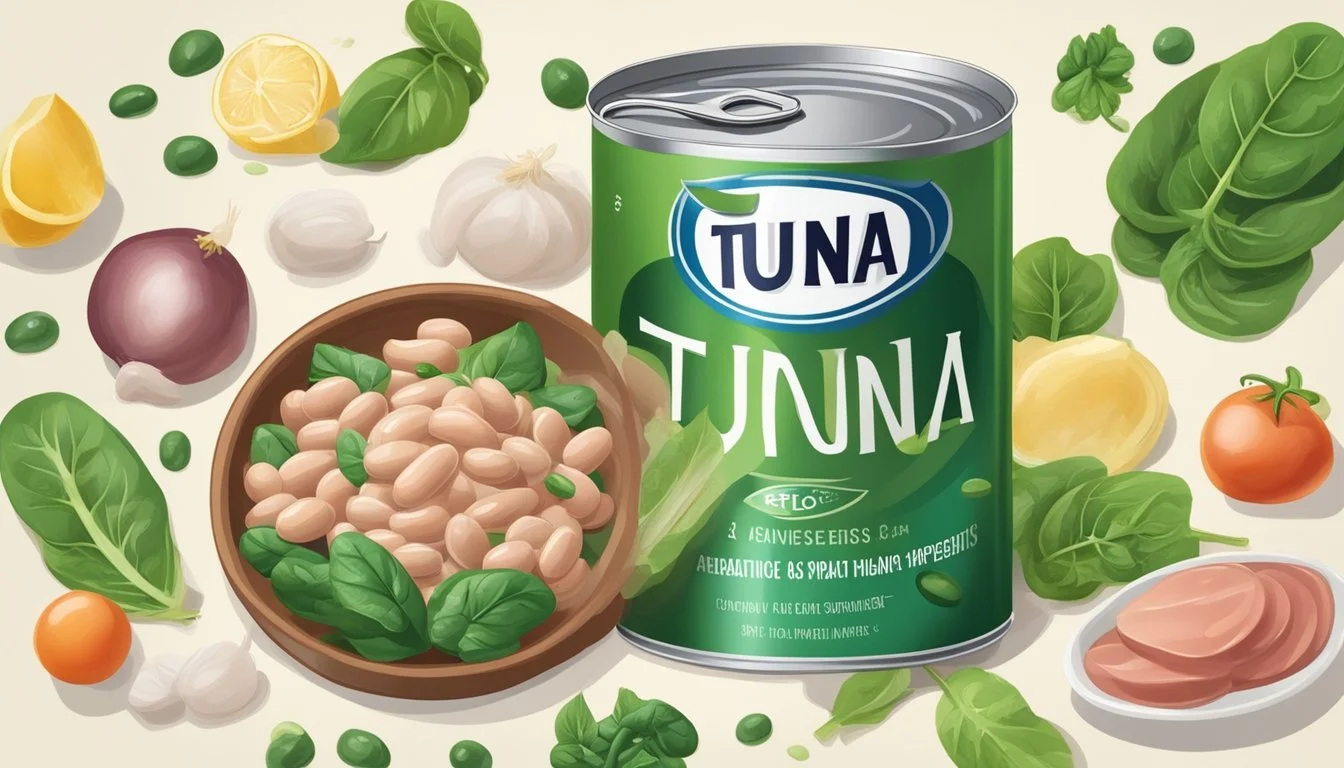10 High-Purine Foods to Limit for Gout Management
Understanding Dietary Choices
Understanding the foods that are high in purines plays a crucial role in managing conditions like gout and kidney stones. Purines are natural substances found in various foods and, when broken down, they form uric acid. Elevated levels of uric acid in the blood can lead to painful joint inflammation and other health issues.
Identifying and reducing the intake of high-purine foods can help alleviate these risks and promote better health. By being mindful of dietary choices, individuals can effectively manage their uric acid levels and minimize potential health complications.
1) Anchovies
Anchovies are a type of small, oily fish that belong to the Engraulidae family. They are often used as toppings on pizzas, in salads, and in various sauces due to their strong flavor.
These fish are particularly high in purines, compounds found in certain foods that can contribute to increased levels of uric acid in the body. Elevated uric acid may lead to gout, a type of arthritis characterized by sudden and severe pain.
When 100 grams of anchovies are consumed, it brings a notable amount of purines, which is significant for individuals managing gout. The high purine content places anchovies on the list of foods to limit or avoid for those prone to gout attacks.
Many people enjoy anchovies for their unique taste and nutritional benefits, such as omega-3 fatty acids, yet individuals with gout may need to seek alternative sources of these nutrients. Omega-3 fatty acids are beneficial for heart health, making the dietary choices for those with gout a careful balance.
Choosing lower-purine fish or other protein sources can help manage uric acid levels. While anchovies have their place in many culinary dishes, their high purine content makes them a less favorable option for individuals with gout concerns.
2) Sardines
Sardines, small oily fish found in many oceans, are known for their high purine content. Each 3.5 oz (100 g) serving of sardines generates over 200 mg of uric acid, a significant amount for individuals managing gout.
While sardines are nutrient-dense, packed with essential omega-3 fatty acids, consuming them can elevate uric acid levels in the body. Elevated uric acid levels can trigger gout attacks in susceptible individuals.
For those prone to gout, sardines may pose a considerable risk. Limiting intake could be necessary to maintain lower uric acid levels. Balancing sardine consumption with other low-purine foods can be beneficial for overall health while managing gout risks efficiently.
3) Mackerel
Mackerel is a popular choice for seafood lovers due to its rich flavor and nutritional benefits. This fish is high in omega-3 fatty acids, which can contribute to heart health and reduce inflammation.
Despite these benefits, mackerel is also high in purines. Purines are substances found in many foods that can raise uric acid levels in the blood.
Those managing gout or trying to lower uric acid levels should consume mackerel in moderation.
High purine levels in mackerel can contribute to the formation of uric acid crystals, which can cause painful gout flare-ups.
Alternative cooking methods, such as grilling, baking, or poaching, can help preserve the nutritional value of mackerel while managing its purine content.
In summary, mackerel is nutritious but should be consumed carefully by individuals sensitive to purines.
This approach can help manage gout symptoms while still enjoying the health benefits of this flavorful fish.
4) Herring
Herring is a type of fish known for its high purine content.
High purine levels in herring can increase the risk of elevated uric acid, which is a concern for people with gout.
Despite its health benefits, such as being rich in omega-3 fatty acids, herring might not be the best choice for those looking to manage their uric acid levels.
For individuals managing gout, limiting the intake of herring can be an important dietary consideration.
By reducing consumption of herring, they might better control fluctuating uric acid levels and avoid potential gout flare-ups.
5) Trout
Trout is a popular fish known for its nutritional benefits, including being a good source of high-quality protein and omega-3 fatty acids.
For individuals managing gout, it's crucial to understand the purine content in trout. Trout is categorized as a fish with moderate to high purine levels. This means it contains between 100 to 300 mg of purines per 100 grams.
Among the different types of trout, rainbow trout is often highlighted. A 3.5-ounce serving of rainbow trout contains approximately 180.9 mg of purines.
Consumption of trout should be moderated for those with gout. While it provides valuable nutrients, its purine content can contribute to increased uric acid levels, potentially triggering gout attacks.
Trout can still be a part of a balanced diet if consumed in controlled portions. Cooking methods such as grilling, steaming, or baking are preferable as they do not add extra fats or calories.
The balance of enjoying trout while managing uric acid levels requires attention to portion sizes and overall dietary habits. Those with gout are advised to consult healthcare providers to tailor their diet appropriately.
6) Scallops
Scallops are high in purines, which can contribute to increasing uric acid levels in the body. This spike in uric acid may lead to gout flare-ups, making it essential for those with gout to monitor their scallop intake.
Despite their high purine content, scallops are a rich source of protein and essential nutrients such as vitamin B12, magnesium, and potassium. These nutrients can contribute to overall health, but the potential risks for gout sufferers cannot be ignored.
Individuals prone to gout may need to limit or avoid scallops to prevent painful flare-ups. Instead, they might consider opting for fish and seafood with lower purine levels, such as flounder or tilapia.
Choosing cooking methods like grilling, baking, steaming, or poaching can also make scallops a slightly healthier option compared to frying. Nonetheless, moderation remains key.
Portion control plays a critical role in dietary management for those with gout. Keeping servings of high-purine foods like scallops to a minimum can contribute to better management of uric acid levels.
Being informed about the purine content in seafood helps individuals make better dietary choices. For those managing gout, awareness and moderation are crucial.
7) Mussels
Mussels, a type of shellfish, are known for being high in purines. These purines can contribute to the formation of uric acid, which may worsen gout symptoms in sensitive individuals.
Due to their high purine content, mussels should be consumed in moderation by those who have or are at risk for gout. A serving size can quickly elevate uric acid levels.
Mussels are not the only seafood high in purines. Other types include herring, scallops, and mackerel. However, mussels are particularly notable due to their widespread consumption.
For people managing gout through diet, replacing mussels with lower-purine seafood options might be beneficial.
Mussels can be part of a balanced diet if eaten sparingly. It is crucial to balance them with other foods that are low in purines to maintain overall health.
8) Cod
Cod is a white fish commonly found in the Atlantic and Pacific Oceans. It is popular for its mild flavor and flaky texture, making it a staple in many diets.
In terms of purine content, cod falls into the moderate to high category. This means that individuals with gout should be cautious about consuming cod, as it can contribute to elevated uric acid levels.
Cooking methods such as grilling, baking, or steaming cod are recommended for those managing their purine intake. Avoiding deep-frying or adding heavy sauces can help maintain a healthier diet overall.
Cod provides other nutritional benefits, including being a good source of lean protein. It is also rich in vitamins and minerals like B12, phosphorus, and niacin, which are essential for maintaining various bodily functions.
For those needing to manage gout symptoms, consuming cod in moderation and alongside low-purine foods can help balance their dietary needs. It's important to consult with a healthcare provider for personalized guidance.
9) Salmon
Salmon is often highlighted for its rich content of omega-3 fatty acids, which offer numerous health benefits, including anti-inflammatory properties.
Despite these benefits, gout sufferers need to approach salmon with caution. It contains moderate to high levels of purines, which can lead to elevated uric acid levels, potentially triggering gout flare-ups.
Smoked salmon, in particular, has a high purine content, exceeding 200 mg uric acid per 100 grams. Therefore, it is advisable for those managing gout to avoid smoked salmon altogether.
Moderation is vital. Small portions of fresh or lightly prepared salmon may be consumed occasionally, but it should not become a regular dietary staple for individuals seeking to control uric acid levels.
Preparing salmon using methods such as grilling, baking, or steaming can make it a healthier option, as these methods do not add excessive amounts of unhealthy fats.
For those with gout, balancing the intake of salmon with other low-purine foods can help manage uric acid levels more effectively. Additionally, maintaining hydration and discussing dietary choices with healthcare providers is essential in managing gout.
10) Tuna
Tuna is a popular seafood known for its nutritional benefits and versatility in various dishes. However, it is also high in purines, which can be problematic for individuals with gout.
Fresh tuna contains approximately 157 mg of purines per 100 grams. Canned tuna, although slightly lower, still has a notable purine content of about 117 mg per 100 grams.
High purine foods like tuna can lead to elevated uric acid levels in the body. This increase in uric acid can cause uncomfortable gout flare-ups. For those managing gout, it is advisable to limit their intake of tuna to reduce the risk of these issues.
While tuna offers a rich source of protein, omega-3 fatty acids, and essential nutrients such as phosphorus and potassium, this needs to be balanced with its purine content.
Consuming tuna in moderation, or opting for lower-purine fish like flounder or tilapia, can help maintain dietary balance. It is important for individuals with gout to be mindful of their tuna consumption to manage their condition effectively.
Understanding Purines
Purines are chemical compounds found in many foods and beverages. They are essential to the body's metabolic process but can lead to health issues when consumed in excess.
What Are Purines?
Purines are naturally occurring substances found in both plant and animal foods. When consumed, the body breaks them down to produce uric acid.
Sources of Purines:
Animal-based foods: Organ meats, red meats, and certain seafood
Plant-based foods: Legumes, spinach, and mushrooms
Excessive intake of high-purine foods can lead to elevated uric acid levels, potentially resulting in health conditions like gout. It's essential to monitor the consumption of purine-rich foods, especially for individuals prone to uric acid-related problems.
Role of Purines in the Body
Purines play a vital role in various biological functions. They are crucial for the synthesis of DNA and RNA, the molecules that store and transmit genetic information.
Additionally, purines are involved in energy metabolism, particularly in the formation of adenosine triphosphate (ATP), which provides energy for cellular activities.
Key Functions:
Genetic Information: Supporting DNA and RNA structure
Energy Production: Facilitating ATP synthesis
Cellular Growth: Promoting cell division and repair
Despite their importance, a balance is necessary. Overconsumption can lead to elevated uric acid, causing conditions like gout and increasing the risk of kidney stones. Managing dietary purine intake is crucial for maintaining optimal health.
Health Implications of High Purine Foods
Consumption of high purine foods is closely tied to the body's uric acid levels and the potential for developing conditions such as gout. Being informed about these implications can aid in better dietary choices.
Purines and Uric Acid
Purines are natural compounds found in many foods. When the body metabolizes purines, it produces uric acid as a byproduct. Normally, uric acid dissolves in the blood and is excreted through urine.
High-Purine Foods:
Seafood: Tuna, mackerel, and sardines
Red Meat: Beef, pork, lamb
Alcohol: Beer and certain spirits
Elevated uric acid levels can lead to hyperuricemia. This condition can cause uric acid crystals to form, especially in joints, leading to painful gout attacks.
Risks Associated with High Purine Intake
Regular consumption of high purine foods increases the risk of gout, a type of inflammatory arthritis. Gout is characterized by sudden, severe pain, swelling, and redness, often affecting the big toe.
Conditions Associated with Gout:
Kidney Stones: High uric acid can lead to the formation of kidney stones.
Chronic Kidney Disease: Long-term high uric acid levels can damage the kidneys over time.
Managing purine intake is crucial for individuals prone to these health issues. Avoiding certain high-purine foods, in combination with a balanced diet, can help minimize these risks.









